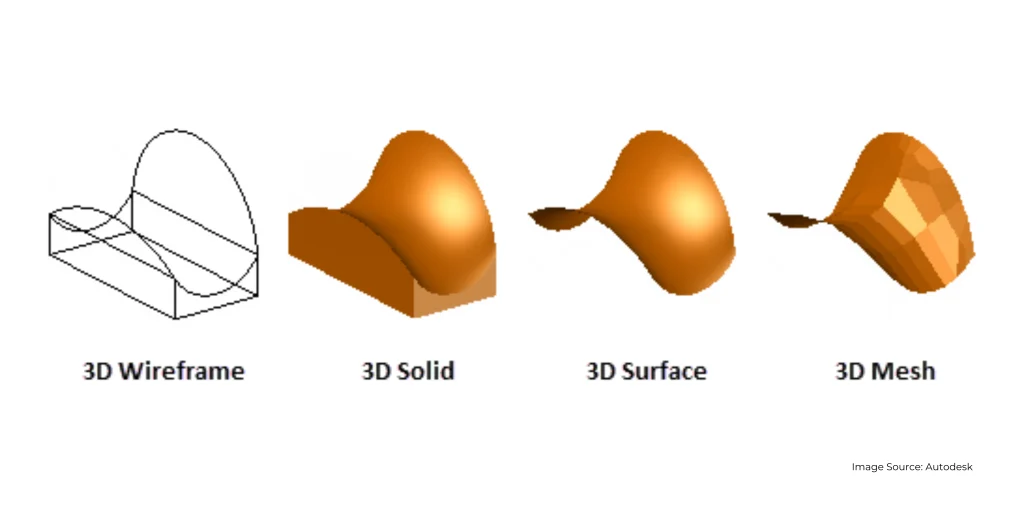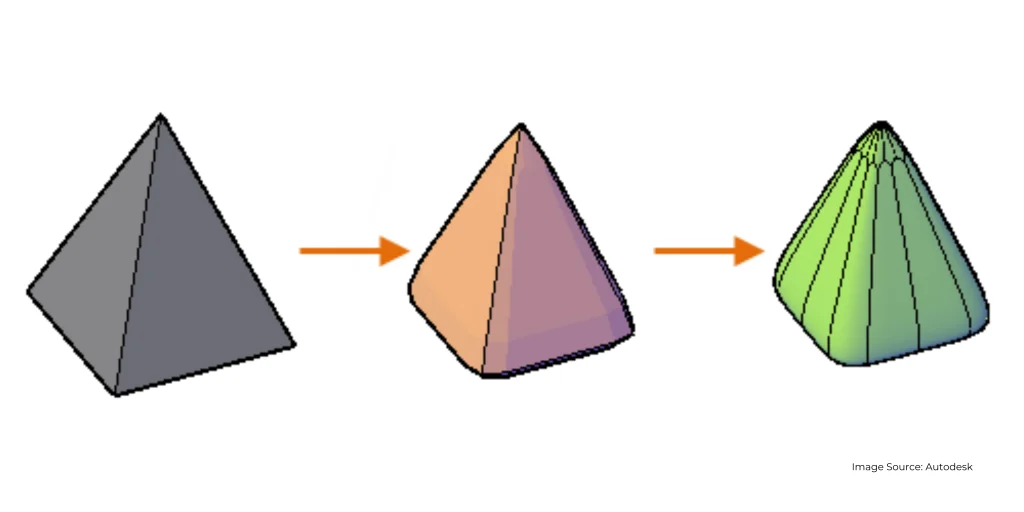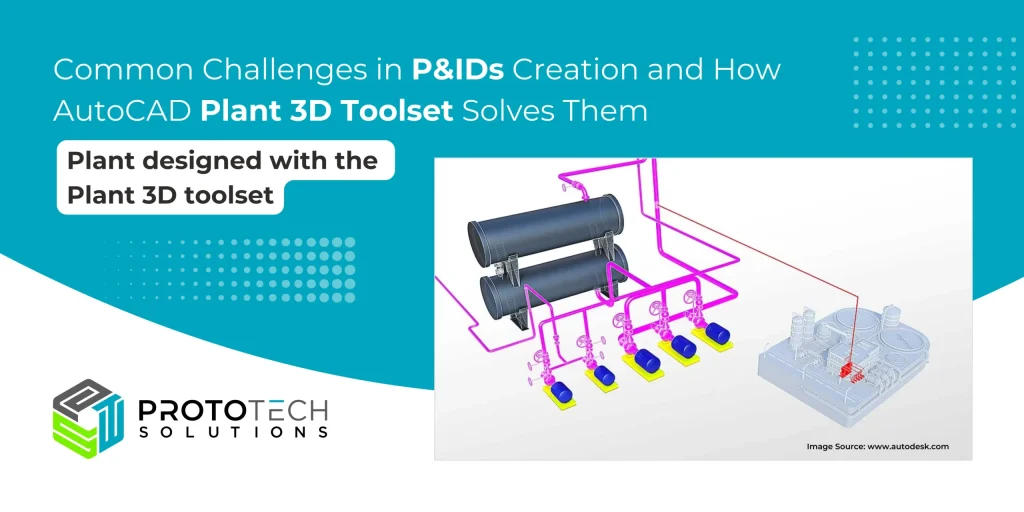Mastering 3D Modeling and Visualization in AutoCAD 2024: Solids, Surfaces, Meshes, and Wireframe

Introduction
When it comes to Computer-Aided Design (CAD), AutoCAD is the name that instantly comes to mind. It’s a true champion that has been around for decades, and with good reason! People usually associate it with 2D drafting, but it’s so much more than that. AutoCAD is a powerhouse that can handle any design challenge with ease, including complex 3D modeling. It offers several types of 3D modeling, each with its own unique set of features and capabilities.!
Understanding 3D Modeling in AutoCAD - Types of 3D Models
At its core, 3D modeling in AutoCAD involves the creation of three-dimensional representations of objects or spaces. This capability allows designers, architects, and engineers to visualize, simulate, and analyze their designs in a virtual environment before bringing them to life. AutoCAD offers various 3D modeling types, each with unique capabilities. Let’s explore the Four major types of 3D modeling in AutoCAD including 3D solids, 3D surfaces, 3D meshes, and 3D wireframe objects.

- 3D Wireframe modeling serves as valuable preliminary design and reference geometry, providing a foundational framework for subsequent modifications and modeling iterations.
- Efficient and user-friendly, 3D Solid modeling in AutoCAD allows seamless integration of primitives and extruded profiles, with added benefits like mass properties and sectioning tools.
- 3D Surface modeling in AutoCAD provides meticulous control over curved surfaces, enabling precise manipulation and detailed analysis of complex geometries.
- Enjoy unrestricted creativity with 3D Mesh modeling in AutoCAD, featuring versatile sculpting, creasing, and smoothing functionalities for freeform design.
Utilizing these various technologies, a 3D model can integrate multiple elements, with the flexibility to convert seamlessly between them as needed. For example, you can transform a basic 3D solid pyramid into a 3D mesh to conduct mesh smoothing. Subsequently, the mesh could be converted either into a 3D surface or reverted into a 3D solid, allowing utilization of their modeling functionalities.

Let’s delve into the depths of 3D modeling in AutoCAD information about these 3D Models
1. 3D Solids
One of the fundamental elements of 3D modeling in AutoCAD is the creation of 3D solids. These are geometric shapes such as cubes, spheres, cones, and cylinders that possess volume and occupy space. In AutoCAD, users can create 3D solids using various tools including extrusion, lofting, sweeping, and revolving.
- Extrusion: This involves the creation of a 3D solid by extending a 2D shape along a specified path. For example, a rectangle can be extruded to create a box.
- Lofting: Lofting allows users to create complex 3D shapes by blending between two or more 2D profiles.
- Sweeping: Similar to extrusion, sweeping involves moving a 2D shape along a path to create a 3D object. However, in sweeping, the shape can follow a curved or non-linear path.
- Revolving: Revolving involves rotating a 2D shape around an axis to create a 3D solid. For instance, a circle can be revolved to form a sphere or a cylinder.
2. 3D Surfaces
While 3D solids represent objects with volume, surfaces in AutoCAD are used to model objects with only a boundary or skin. Surfaces are often employed in the design of complex shapes or when precise control over curvature is required. AutoCAD offers tools for creating and manipulating surfaces, including lofting, sweeping, and patching.
- Lofting and Sweeping Surfaces: Similar to their solid counterparts, lofting and sweeping can also be used to create surfaces by blending between two or more profiles.
- Patching: Patching involves filling the gaps between existing surfaces to create a single, continuous surface.
3. 3D Meshes
In addition to 3D solids and surfaces, AutoCAD also supports mesh modeling. Meshes are composed of vertices, edges, and faces and are particularly useful for modeling organic shapes or objects with irregular geometry. AutoCAD provides tools for creating, editing, and refining meshes, allowing users to easily sculpt intricate forms.
- Mesh Creation: Users can create meshes from scratch using primitives such as cubes, spheres, and cylinders, or by converting existing objects into meshes.
- Mesh Editing: AutoCAD offers a range of editing tools for manipulating meshes, including vertex editing, edge smoothing, and face subdivision.
- Mesh Refinement: To achieve smoother surfaces or finer details, users can refine meshes by increasing the number of vertices and adjusting their positions.
4. 3D Wireframe Objects
While 3D solids, surfaces, and meshes represent the visual aspect of a model, AutoCAD also supports wireframe objects for defining the underlying structure. Wireframe objects consist of lines and curves that outline the shape of an object without filling it in. These objects are useful for conceptualizing designs or for creating lightweight representations of complex models.
- Line and Curve Creation: Users can create lines, polylines, arcs, and splines to define the shape of wireframe objects.
- Editing and Manipulation: AutoCAD provides a range of tools for editing and manipulating wireframe objects, including stretching, rotating, and mirroring.
- Visibility Control: Wireframe objects can be displayed in various modes, including hidden, shaded, and rendered, allowing users to control their visibility and appearance.
Advantages of 3D Modeling in AutoCAD
The adoption of 3D modeling in AutoCAD offers numerous benefits across various industries:
- Visualization: 3D models provide a realistic representation of designs, allowing stakeholders to visualize the final product before construction or manufacturing begins.
- Simulation: By simulating real-world conditions, such as structural loads or fluid dynamics, 3D models enable engineers to analyze the performance and behavior of their designs.
- Collaboration: 3D models serve as a common platform for collaboration, facilitating communication and feedback among team members, clients, and stakeholders.
- Iterative Design: With the ability to quickly iterate and modify designs, 3D modeling accelerates the design process and enables designers to explore multiple concepts efficiently.
Conclusion
In conclusion, 3D modeling in AutoCAD encompasses a diverse array of techniques and tools, ranging from 3D solids and surfaces to meshes and wireframe objects. By mastering these capabilities, designers, architects, and engineers can unleash their creativity, streamline their workflows, and bring their ideas to life with precision and efficiency. Whether visualizing architectural spaces, engineering mechanical components, or designing intricate sculptures, AutoCAD remains at the forefront of 3D modeling, empowering users to transform their visions into reality.
Are you looking for 3D modeling or visualization for your projects? Look no further ProtoTech Solutions is a leading provider of cutting-edge 3D software solutions company in India, specializing in CAD/CAM plugin development, CAD customization, design & drafting, 3D modeling & visualization, AI/ML, BIM app development, and AR/VR technologies with TWO decades of domain expertise.



